| /Cultural Heritage/ |
| Atayal traditional lessons take half of the subject in the curriculum of Smangug, while native language teaching is the most important among them. |
 |
 Native language course Native language course |
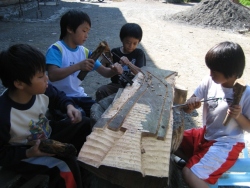 |
 Wood carving course Wood carving course |
|
| "Mother tongue" is the key to pass on cultural heritage. The Atayal language does not have its own words, so people use the Roman alphabet to pass on the Atayal language. In addition to normal classroom teaching by book, they also rule that children must use native language to talk with family of the tribe, so each child of Smangus can speak Atayal language fluently. |
| "Ethnical Plant" is also the curriculum that children need to learn. Smangus people take children to the ecological park at the top of the school and to the various trails near the tribe. They teach children to recognize the high-altitude ecology, tell the children what plants to eat, what plants can cure disease, what species’ name is, what the role is, and what kind of trap left by hunters or by animals and so on. They not only teach children understand the nature, and knowledge of animals and plants, but also tell them the importance of ecological conservation in an early age. |
| They also arrange children to learn to cultivate millet by the traditional flame way, to measure, to observe and to record the growth of millet. The curriculum continues until harvest. Children could realize the interdependence of human and land through work. |
| In addition, they arranged the courses of
Gan mouth string
, weaving, wood carving and other traditional arts for children. The sources of teachers are from either people of the tribe or artists from outside, these people obligated to help kids of Smangus. |
| What Smangus primary school teaches children here is the sense of identity for their land, their culture and their root. |
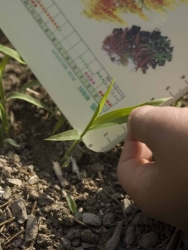 |
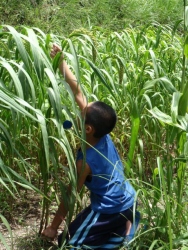 |
 Planting corn Planting corn |
 Planting corn Planting corn |
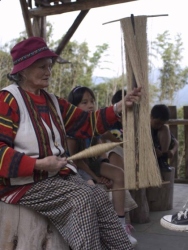 |
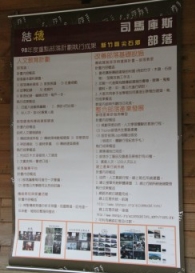 |
 Weaving course Weaving course |
 Humane Education plan Humane Education plan |
 |
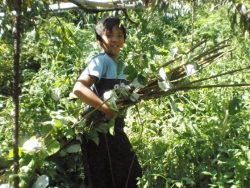 |
 Weaving course Weaving course |
 Knowing Ethnical Plant Knowing Ethnical Plant |
|







